#electric blue jack dempsey
Text


My electric blue jack dempseys and a bonus male convict who wanted to be in the shot.
Both are female.
3 notes
·
View notes
Text
so I thought I knew what species this guy was but apparently I don't. he doesn't match any pictures of any jack dempsey nor any blue acara. in leaning toward dempsey bc acaras are a lot rounder in the face. fishblr please
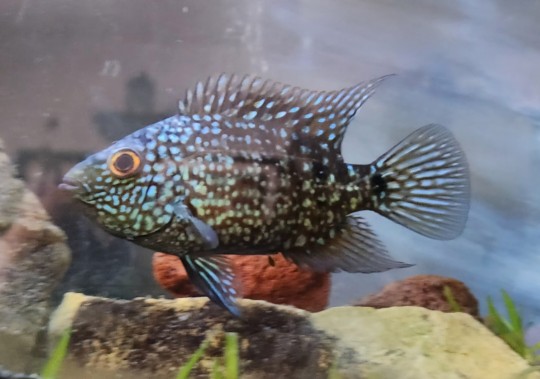
#fishblr#fish#cichlid#jack dempsey#electric blue acara#fish keeping#aquarium#who is this man#planted aquarium#planted tank#vi the fish#american cichlid#APPARENTLY
29 notes
·
View notes
Video
Unveiling the Enchanting Electric Blue Acara & Electric Blue Jack Dempsey
0 notes
Video
Electric Blue Jack Dempsey | Nandopsis octofasciatum
#electric#blue#jack#dempsey#electric blue jack dempsey#freshwater#fish tank#fish#aquarium#aquatic#aquaria#cichlidae#cichlid
51 notes
·
View notes
Photo

New addition to the 125 - this is the fish that originally made me want a big tank. Hopefully he doesn’t end up being a dick!
#Severus and the Ellioti should keep him in line#but so far as a baby he’s very good#electric blue jack dempsey#fishblr
40 notes
·
View notes
Text
I have no idea what to put in my new tank? 60 gallons with sump filtration Freshwater only So first I wanted Electric Blue Acaras, or I was thinking some electric blue jack dempseys. But I've also wanted to have angelfish my entire life, so I would love them! There are also Parrot fish which I am considering! Then there are the dwarf gouramis? I'm not really sure what to do! I want somewhat of a community tank and I keep trying to see what fish can do well together but everybody has different opinions. Any recomendations would be great! Or any advice from any one with firsthand expierence with any of these species or community tanks are also welcome!
#fish#fish tank#electric blue acara#dwarf gourami#angelfish#electric blue jack dempsey#community tank#recommendations#advice#aquarist#aquarium#hobby
2 notes
·
View notes
Video
undefined
tumblr
#fishblr#hobbyist#fish#aquarium#tank#silver dollar#severum#jack dempseys#electric blue jack dempseys#driftwood#spiderwood
6 notes
·
View notes
Text


Tis mermay heheheh gettin some skelefish for a lil bit. Er, more skelefish.
Lust is a betta, Blue is an electric blue acara, Horror is a jack dempsey, and Crops is a hi fin green phantom pleco. Gonna make them all freshwater fish, but I might doodle some Leviathantale later on huehue.
#if im getting fish facts wrong (like size or compatibility)#oh well#undertale#mermaid sans#merskeleton#lust!sans#lust sans#underlust#underlust fanart#lust sans fanart#swap!sans#us!sans#swap sans#blueberry sans#underswap sans#underswap fanart#lustberry#horror!sans#horrortale#horror sans#farm!sans#farm sans#farmtale#farmer sans#rottoncrops#horror sans x farm sans#blueberry sans x lust sans#undertale fanart#undertale multiverse#freshwater mermaid au
132 notes
·
View notes
Photo
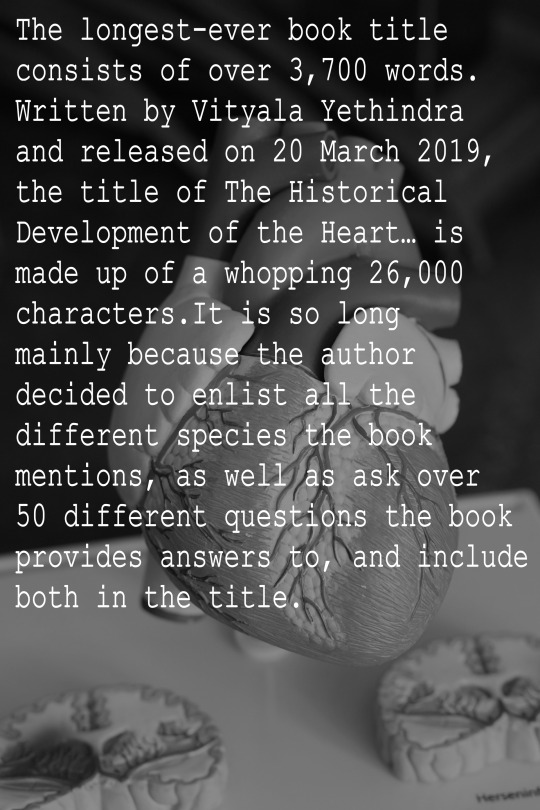
The full book title contains 3777 words and reads as follows: 'The historical development of the Heart i.e. from its formation from Annelida: Clam worm, Seamouse, Lugworm, Megascolex, Tubifex, Pheretima, Freshwater leech, marine leech, land leech. Arthropoda: Ladybird, Krill, Rock Barnacle, Root-headed Barnacle, Copepod, Silverfish, Cairns birdwing, Silver - spotted skipper, Scutigera, Cray fish, Large white, Andonis blue, Camberwell beauty, Tiger swallowtail, Regent skipper, Black – veined white, Green – underside blue, Blue Morpho, Apollo, Guava skipper, Cleopatra, Large copper, Millipede, Orb spider, Black widow spider, Giant crab spider, Wolf spider, Bird – eating spider, Tenebrionid beetle, Green Tiger beetle, African goliath beetle, Scolopendra, Diving beetle, African ground beetle, New guinea weevil, Barnacle, Lobster, Shrimp, Woodlice, Mite, Prawn, Housefly, Butterfly, Monarch butterfly, Peacock butterfly, Honey bee, Fairy shrimp, Horsehoe crab, Tick, Bluebootle, Froghopper, Yellow crazy ant, Water flea, Sea spider, Fiddler crab, Shiny spider crab, Hermit crab, Sail swallowtail, Red admiral, Morpho butterfly, Desert locust, Stephens island weta, Speckled bush cricket, Mole cricket, Dung – beetle, Euthalia ynipardus, Small blues, Termite, Hornet, Mosquito, Garden spider, Tarantula, Desert hairy scorpion, Emperor dragon – fly, Moth, Centipede, Wood ant, Stag beetle, Indian red admiral, Blue admiral, Harvestman, Hoverfly, Shield bug, Assassin bug, Cicada, Coreid bug, Rose aphid, Water – boatman, Wasp, June bug, Large tortoiseshell, Frog beetle, Mexican red – legged tarantula, Paintedlady, Sydney funnelweb spider, Small tortoiseshell, Mountain bumble bee, Trapdoor spider, Jumping spider, Daddy longlegs spider, Orchind bee, Asian carpenter bee, Parasitic bee, House spider, Giant longhorn beetle, Flea, Bedbug Beetle, Cockroach, Scorpion, Spider, Ant, Gnats, Grasshopper, Silver fish, Crab, Great green bush cricket, Elephant hawk – moth. Mollusca: Neomenia, Chaetoderma, Chiton, Lepidopleurus, Apple snail, Sea hare, Sea lemon, Dentalium, Freshwater mussel, Marine mussel, Pearl oyster, Cuttlefish, Giant squid, Chambered fish, Devilfish. Fishes or Pisces: African glass catfish, African lungfish, Aholehole, Airbreathing catfish, Alaska blackfish, Albacore, Alewife, Alfonsino, Algae eater, Alligatorfish, Alligator gar, Amberjack - Seriola dumerili, American sole, Amur pike, Anchovy, Anemonefish, Angelfish, Angler, Angler catfish, Anglerfish, Antarctic cod, Antarctic icefish, Antenna codlet, Arapaima, Archerfish, Arctic char, Armored gurnard, Armored searobin, Armorhead, Armorhead catfish, Armoured catfish, Arowana, Arrowtooth eel, Asian carps, Asiatic glassfish, Atka mackerel, Atlantic Bonito (Sarda sarda), Atlantic cod, Atlantic herring, Atlantic salmon, Atlantic Sharpnose Shark - Rhizoprioltodon terraenovae, Atlantic saury, Atlantic silverside, Australasian salmon, Australian grayling, Australian herring, Australian lungfish, Australian prowfish, Ayu, Baikal oilfish, Bala shark, Ballan wrasse, Bamboo shark, Banded killifish, Bandfish, Banjo, Bangus, Banjo catfish, Bank Sea Bass, Barb, Barbel, Barbeled dragonfish, Barbeled houndshark, Barbel-less catfish, Barfish, Barracuda, Barracudina, Barramundi, Barred danio, Barreleye, Basking shark, Bass, Basslet, Batfish, Bat ray, Beachsalmon, Beaked salmon, Beaked sandfish, Beardfish, Beluga sturgeon, Bengal danio, Betta, Bichir, Bicolor goat fish, Bigeye, , Bighead carp, Bigmouth buffalo, Bigscale, Billfish, Bitterling, Black angelfish, Black bass, Black dragonfish, Blackchin, Blackfin Tuna - Thunnus atlanticus, Blackfish, Black neon tetra, Blacktip reef shark, Black mackerel, Black scalyfin, Black sea bass, Black scabbardfish, Black swallower, Black tetra, Black triggerfish, Bank Sea Bass aka Yellow Sea Bass - Centropristis ocyurus, Bleak, Blenny, Blind goby, Blind shark, Blobfish, Blueline Tilefish, Blowfish, Blue catfish, Blue danio, Blue-redstripe danio, Blueline Tilefish , Blue eye, Bluefin tuna, Bluefish, Bluegill, Blue gourami, Blue shark, Blue triggerfish, Blue whiting, Bluntnose knifefish, Bluntnose minnow, Boafish, Boarfish, Bobtail snipe eel, Bocaccio, Boga, Bombay duck, Bonefish, Bonito, Bonnetmouth, Bonytail chub, Bronze corydoras, Bonytongue, Bowfin, Boxfish, Bramble shark, Bream, Brill, Bristlemouth, Bristlenose catfish, Broadband dogfish, Brook lamprey, Brook trout, Brotula, Brown trout, Buffalo fish, Bullhead, Bullhead shark, Bull shark, Bull trout, Burbot, Bumblebee goby, Buri, Burma danio, Burrowing goby, Butterfish, Butterfly ray, Butterflyfish, California flyingfish, California halibut, Canary rockfish, Candiru, Candlefish, Capelin, Cardinalfish, Cardinal tetra, Carp, Carpetshark, Carpsucker, Catalufa, Catfish, Catla, Cat shark, Cavefish, Celebes rainbowfish, Central mudminnow, Chain pickerel, Channel bass, Channel catfish, Char, Cherry salmon, Chimaera, Chinook salmon, Cherubfish, Chub, Chubsucker, Chum salmon, Cichlid, Cisco, Climbing catfish, Climbing gourami, Climbing perch, Clingfish, Clownfish, Clown loach, Clown triggerfish, Cobbler, Cobia, Cod, Codlet, Codling, Coelacanth, Coffinfish, Coho salmon, Coley, Collared carpetshark, Collared dogfish, Colorado squawfish, Combfish, Combtail gourami, Common carp, Common tunny, Conger eel, Convict blenny, Convict cichlid, Cookie-cutter shark, Coolie loach, Cornetfish, Cowfish, Cownose ray, Cow shark, Crappie, Creek chub, Crestfish, Crevice kelpfish, Croaker, Crocodile icefish, Crocodile shark, Crucian carp, Cuckoo wrasse, Cusk, Cusk-eel, Cutlassfish, Cutthroat eel, Cutthroat trout, Dab, Dace, Desert pupfish, Devario, Devil ray, Dhufish, Discus, Diver: New Zealand sand diver or long-finned sand diver, Dogfish, Dogfish shark, Dogteeth tetra, Dojo loach, Dolly Varden trout, Dolphin fish - Corypaena hippurus, Dorab, Dorado, Dory, Dottyback, Dragonet, Dragonfish, Dragon goby, Driftfish, Driftwood catfish, Drum, Duckbill, Duckbill eel, Dusky grouper, Dusky Shark - Carcharhinus obscurus, Dwarf gourami, Dwarf loach, Eagle ray, Earthworm eel, Eel, Eel cod, Eel-goby, Eelpout, Eeltail catfish, Elasmobranch, Electric catfish, Electric eel, Electric knifefish, Electric ray, Elephant fish, Elephantnose fish, Elver, Ember parrotfish, Emerald catfish, Emperor angelfish, Emperor bream, Escolar, Eucla cod, Eulachon, European chub, European eel, European flounder, European minnow, European perch, False brotula, False cat shark, False moray, Fangtooth, Fathead sculpin, Featherback, Fierasfer, Fire goby, Filefish, Finback cat shark, Fingerfish, Firefish, Flabby whale fish, Flagblenny, Flagfin, Flagfish, Flagtail, Flashlight fish, Flatfish, Flathead, Flathead catfish, Flier, Flounder, Flying gurnard, Flying fish, Footballfish, Forehead brooder, Four-eyed fish, French angelfish, Freshwater eel, Freshwater hatchetfish, Freshwater shark, Frigate mackerel, Frilled shark, Frogfish, Frogmouth catfish, Fusilier fish, Galjoen fis, Ganges shark, Geel, Garibaldi, Garpike, Ghost fish, Ghost flathead, Ghost knifefish, Ghost pipefish, Ghost shark, Ghoul, Giant danio, Giant gourami, Giant sea bass, Gibberfish, Gila trout, Gizzard shad, Glass catfish, Glassfish, Glass knifefish, Glowlight danio, Goatfish, Goblin shark, Goby, Golden dojo, Golden loach, Golden shiner, Golden trout, Goldeye, Goldfish, Gombessa, Goosefish, Gopher rockfish, Gourami, Grass carp, Graveldiver, Grayling, Gray mullet, Gray reef shark, Great white shark, Green swordtail, Greeneye, Greenling, Grenadier, Green spotted puffer, Ground shark, Grouper, Grunion, Grunt, Grunter, Grunt sculpin, Gudgeon, Guitarfish, Gulf menhaden, Gulper eel, Gulper, Gunnel, Guppy, Gurnard, Haddock, Hagfish, Hairtail, Hake, Halfbeak, Halfmoon, Halibut, Halosaur, Hamlet, Hammerhead shark, Hammerjaw, Handfish, Hardhead catfish, Harelip sucker, Hatchetfish, Hawkfish, Herring, Herring smelt, Hickory Shad, Horn shark, Horsefish, Houndshark, Huchen, Humuhumunukunukuapua'a, Hussar, Icefish, Ide, Ilisha, Inanga, Inconnu, Jack, Jackfish, Jack Dempsey, Japanese eel, Javelin, Jawfish, Jellynose fish, Jewelfish, Jewel tetra, Jewfish, John Dory, Kafue pike, Kahawai, Kaluga, Kanyu, Kelp perch, Kelpfish, Killifish, King of the herrings, Kingfish, King-of-the-salmon, Kissing gourami, Knifefish, Knifejaw, Koi, Kokanee, Kokopu, Kuhli loach, Labyrinth fish, Ladyfish, Lake chub, Lake trout, Lake whitefish, Lampfish, Lamprey, Lanternfish, Largemouth bass, Leaffish, Lefteye flounder, Lemon shark, Lemon sole, Lemon tetra, Lenok, Leopard danio, Lightfish, Limia, Lined sole, Ling, Ling cod, Lionfish, Livebearer, Lizardfish, Loach, Loach catfish, Loach goby, Loach minnow, Longfin, Longfin dragonfish, Longfin escolar, Longfin smelt, Long-finned char, Long-finned pike, Longjaw mudsucker, Longneck eel, Longnose chimaera, Longnose dace, Longnose lancetfish, Longnose sucker, Longnose whiptail catfish, Long-whiskered catfish, Loosejaw, Lost River sucker, Louvar, Loweye catfish, Luderick, Luminous hake, Lumpsucker, Lungfish, Mackerel, Mackerel shark, Madtom, Mahi-mahi, Mahseer, Mail-cheeked fish, Mako shark, Mandarinfish, Masu salmon, Medaka, Medusafish, Megamouth shark, Menhaden, Merluccid hake, Mexican golden trout, Midshipman fish, Milkfish,, Minnow, Minnow of the deep, Modoc sucker, Mojarra, Mola, Monkeyface prickleback, Monkfish, Mooneye, Moonfish, Moorish idol, Mora, Moray eel, Morid cod, Morwong, Moses sole, Mosquitofish, Mouthbrooder, Mozambique tilapia, Mrigal, Mud catfish (Mud cat), Mudfish, Mudminnow, Mud minnow, Mudskipper, Mudsucker, Mullet, Mummichog, Murray cod, Muskellunge, Mustache triggerfish, Mustard eel, Naked-back knifefish, Nase, Needlefish, Neon tetra, New World rivuline, New Zealand smelt, Nibble fish, Noodlefish, North American darter, North American freshwater catfish, North Pacific daggertooth, Northern anchovy, Northern clingfish, Northern lampfish, Northern pike, Northern sea robin, Northern squawfish, Northern stargazer, Notothen, Nurseryfish, Nurse shark, Oarfish, Ocean perch, Ocean sunfish, Oceanic whitetip shark, Oilfish, Oldwife, Old World knifefish, Olive flounder, Opah, Opaleye, Orange roughy, Orangespine unicorn fish, Orangestriped triggerfish, Orbicular batfish, Orbicular velvetfish, Oregon chub, Orfe, Oriental loach, Oscar, Owens pupfish, Pacific albacore, Pacific cod, Pacific hake, Pacific herring, Pacific lamprey, Pacific salmo, Pacific saury, Pacific trout, Pacific viperfish, Paddlefish, Pancake batfish, Panga, Paradise fish, Parasitic catfish, Parore, Parrotfish, Peacock flounder, Peamouth, Pearleye, Pearlfish, Pearl danio, Pearl perch, Pelagic cod, Pelican eel, Pelican gulper, Pencil catfish, Pencilfish, Pencilsmelt, Peppered corydoras, Perch, Peters' elephantnose fish, Pickerel, Pigfish, Pike conger, Pike eel, Pike, Pikeblenny, Pikeperch, Pilchard, Pilot fish, Pineapplefish, Pineconefish, Pink salmon, Píntano, Pipefish, Piranha, Pirarucu, Pirate perch, Plaice, Platy, Platyfish, Pleco, Plownose chimaera, Poacher, Pollock, Pomfret, Pompano dolphinfish, Ponyfish, Popeye catalufa, Porbeagle shark, Porcupinefish, Porgy, Port Jackson shark, Powen, Prickleback, Pricklefish, Prickly shark, Prowfish, Pufferfish, Pumpkinseed, Pupfish, Pygmy sunfish, Queen danio, Queen parrotfish, Queen triggerfish, Quillback, Quillfish, Rabbitfish, Raccoon butterfly fish, Ragfish, Rainbow trout, Rainbowfish, Rasbora, Ratfish, Rattail, Ray, Razorback sucker, Razorfish, Red Grouper, Red salmon, Red snapper, Redfin perch, Redfish, Redhorse sucker, Redlip blenny, Redmouth whalefish, Redtooth triggerfish, Red velvetfish, Red whalefish, Reedfish, Reef triggerfish, Remora, Requiem shark, Ribbon eel, Ribbon sawtail fish, Ribbonfish, Rice eel, Ricefish, Ridgehead, Riffle dace, Righteye flounder, Rio Grande perch, River loach, River shark, River stingray, Rivuline, Roach, Roanoke bass, Rock bass, Rock beauty, Rock cod, Rocket danio, Rockfish, Rockling, Rockweed gunnel, Rohu, Ronquil, Roosterfish, Ropefish, Rough scad, Rough sculpin, Roughy, Roundhead, Round herring, Round stingray, Round whitefish, Rudd, Rudderfish, Ruffe, Russian sturgeon, Sábalo, Sabertooth, Saber-toothed blenny, Sabertooth fish, Sablefish, Sacramento blackfish, Sacramento splittail, Sailfin silverside, Sailfish, Salamanderfish, Salmon, Salmon shark, Sandbar shark, Sandburrower, Sand dab, Sand diver, Sand eel, Sandfish, Sand goby, Sand knifefish, Sand lance, Sandperch, Sandroller, Sand stargazer, Sand tiger, Sand tilefish, Sandbar Shark - Carchathinus plumbeus, Sarcastic fringehead, Sardine, Sargassum fish, Sauger, Saury, Sawfishm, Saw shark, Sawtooth eel, Scabbard fish, Scaly dragonfish, Scat, Scissortail rasbora, Scorpionfish, Sculpin, Scup, Sea bass, Sea bream, Sea catfish, Sea chub, Sea devil, Sea dragon, Sea lamprey, Sea raven, Sea snail, Sea toad, Seahorse, Seamoth, Searobin, Sevan trout, Sergeant major, Shad, Shark, Sharksucker, Sharpnose puffer, Sheatfish, Sheepshead, Sheepshead minnow, Shiner, Shortnose chimaera, Shortnose sucker, Shovelnose sturgeon, Shrimpfish, Siamese fighting fish, Sillago, Silver carp, Silver dollar, Silver dory, Silver hake, Silverside, Silvertip tetra, Sind danio, Sixgill ray, Sixgill shark, Skate, Skilfish, Skipjack tuna, Slender mola, Slender snipe eel, Sleeper, Sleeper shark, Slickhead, Slimehead, Slimy mackerel, Slimy sculpin, Slipmouth, Smalleye squaretail, Smalltooth sawfish, Smelt, Smelt-whiting, Smooth dogfish, Snailfish, Snake eel, Snakehead, Snake mackerel, Snapper, Snipe eel, Snipefish, Snoek, Snook, Snubnose eel, Snubnose parasitic eel, Sockeye salmon, Soldierfish, Sole, South American darter, South American lungfish, Southern Dolly Varden, Southern flounder, Southern hake, Southern sandfish, Southern smelt, Spadefish, Spaghetti eel, Spanish mackerel, Spearfish, Speckled trout, Spiderfish, Spikefish, Spinefoot, Spiny basslet, Spiny dogfish, Spiny dwarf catfish, Spiny eel, Spinyfin, Splitfin, Spookfish, Spotted climbing perch, Spotted danio, Spottail Pinfish - Diplodus holbrooki, Sprat, Springfish, Squarehead catfish, Squaretail, Squawfish, Squeaker, Squirrelfish, Staghorn sculpin, Stargazer, Starry flounder, Steelhead, Stickleback, Stingfish, Stingray, Stonecat, Stonefish, Stoneroller minnow, Stream catfish, Striped bass, Striped burrfish, Sturgeon, Sucker, Suckermouth armored catfish, Summer flounder, Sundaland noodlefish,Sunfish, Surf sardine, Surfperch, Surgeonfish, Swallower, Swamp-eel, Swampfish, Sweeper, Swordfish, Swordtail, Tadpole cod, Tadpole fish, Tailor, Taimen, Tang, Tapetail, Tarpon, Tarwhine, Telescopefish, Temperate bass, Temperate perch, Tenpounder, Tenuis, Tetra, Thorny catfish, Thornfish, Threadfin, Threadfin bream, Thread-tail, Three spot gourami, Threespine stickleback, Three-toothed puffer, Thresher shark, Tidewater goby, Tiger barb, Tigerperch, Tiger shark, Tiger shovelnose catfish, Tilapia, Tilefish, Titan triggerfish, Toadfish, Tommy ruff, Tompot blenny, Tonguefish, Tope, Topminnow, Torpedo, Torrent catfish, Torrent fish, Trahira, Treefish, Trevally, Triggerfish, Triplefin blenny, Triplespine, Tripletail, Tripod fish, Trout, Trout cod, Trout-perch, Trumpeter, Trumpetfish, Trunkfish, Tubeblenny, Tube-eye, Tube-snout, Tubeshoulder, Tui chub, Tuna, Turbot, Two spotted goby, Uaru, Unicorn fish, Upside-down catfish, Vanjaram, Velvet belly lanternshark, Velvet catfish, Velvetfish, Vermillion Snapper - Rhomboplites aurorubens, Vimba, Viperfish, Wahoo, Walking catfish, Wallago, Walleye, Walleye Pollock, Walu, Warmouth, Warty angler, Waryfish, Waspfish, Weasel shark, Weatherfish, Weever, Weeverfish, Wels catfish, Whale catfish, Whalefish, Whale shark, Whiff, Whitebait, White croaker, Whitefish, White marlin, White shark, Whitetip reef shark, Whiting, Wobbegong, Wolf-eel, Wolffish, Wolf-herring, Worm eel, Wormfish, Wrasse, Wrymouth, X-ray fish, Yellowback fusilier, Yellowbanded perch, Yellow bass, Yellowedge grouper (Hyporthodus flavolimbatus), Yellow-edged moray, Yellow-eye mullet, Yellowhead jawfish, Yellowfin croaker, Yellowfin cutthroat trout, Yellowfin grouper, Yellowfin Tuna - Thunnus albacares, Yellowfin pike, Yellowfin surgeonfish, Yellowfin tuna, Yellowmargin triggerfish, Yellow moray, Yellow perch, Yellowtail, Yellowtail amberjack, Yellowtail barracuda, Yellowtail clownfish, Yellowtail horse mackerel, Yellowtail kingfish, Yellowtail snapper, Yellow tang, Yellow weaver, Yellowtail catfish, Zander, Zebra bullhead shark, Zebra danio, Zebrafish, Zebra lionfish, Zebra loach, Zebra oto, Zebra pleco, Zebra shark, Zebra tilapia, Zebra turkeyfish, Ziege, Zingel. Amphibians: Frogs and Toads, Painted frogs, Disc tongued frogs, Fire Belly toads, Litter frogs, European Spadefoot toads, Parsley frogs, Tongueless frogs, Clawed frogs, Mexican Burrowing Toad, American spadefoot toads, Screeching frogs, True toads, Glass Frogs, Poison dart frogs, Ghost frogs, Shovelnose frogs, Tree frogs, Sedge frogs, Southern frogs, Narrow-mouthed frogs, Australian ground frogs, True frogs, Moss frogs, Seychelles frog, Giant Salamanders, Asiatic Salamanders, Mole Salamanders, Pacific giant salamanders, Amphiumas, Lungless salamanders, Mudpuppies and Waterdogs, Torrent salamanders, True salamanders and Newts, Sirens, Common caecilians, Fish caecilians, Beaked caecilians. Reptiles: Turtles, common snapping turtles and alligator snapping turtle, pond turtles and box turtles, tortoises, Asian river turtles and allies, pignose turtles, softshell turtles, river turtles, mud turtles, sea turtles, leatherback turtles, tuataras, scaled reptiles, agamas, chameleons, casquehead lizard, iguanas, Madagascar iguanids, collared and leopard lizards, horned lizards, anoles, wood lizards, Neotropical ground lizards, geckos, legless lizards, blind lizards, spinytail Lizards, plated lizards, spectacled lizards, whiptails and tegus, Lacertids, skinks, night lizards, glass lizards, American legless lizards, knob-scaled lizards, gila monsters, earless Monitor lizards, monitor lizards, worm Lizards, shorthead Worm Lizards, two-legged Worm Lizards, snakes, wart snakes, false coral snakes, dwarf pipe snakes, African burrowing asps, stiletto snakes, boas, anacondas, Old World sand boas, Mauritius snakes, Colubrids, typical snakes, Asian pipe snakes, cobras, coral snakes, mambas, sea snakes, Mexican pythons, pythons, dwarf boas, pipe snakes, shield-tailed snakes, vipers, pitvipers, Fae's viper, night adders, pitvipers, rattlesnakes, true vipers, sunbeam snakes, blind snakes, primitive blind snakes, slender blind snakes, thread snakes, blind snakes, typical blind snakes, Crocodiles, alligators, garials. Aves: Ostrich, rheas, cassowaries and emu, kiwis, elephant birds, upland moas, great moas, lesser moas, Tinamous, Australian brush turkey,megapodes, chachalacas, curassows, and guans, Guineafowl, pheasants and allies, New World quail, pheasants and relatives, mihirungs, screamers, magpie-goose, ducks, geese, and swans, grebes, swimming flamingos, flamingos, pigeons and doves, sandgrouse, mesites, Tawny frogmouth, Nightjars, oilbird, potoos, frogmouths, owlet-nightjars, treeswifts, swifts, hummingbird, cuckoos and relatives, turacos and relatives, bustards, hoatzin, cranes and allies, cranes, limpkin, trumpeters, rails and allies, adzebills, finfoots, flufftails, rails and relatives, thick-knees and allies, thick-knees and relatives, sheathbills, Magellanic plover, plover-like waders, golden plovers, ibisbill, oystercatchers, plovers and lapwings, jacana-like waders, painted snipes, Egyptian plover, jacanas, seedsnipes, plains-wanderer, sandpipers and relatives, buttonquail, gulls and allies, coursers and pratincoles, crab-plover, skuas and jaegers, auks and puffins, gulls, skimmers and terns, sunbittern, tropicbirds, penguins, albatrosses, austral storm petrels, northern storm petrels, petrels and relatives, White stork, storks, frigatebirds, boobies and gannets, darters, cormorants and shags, ibises and spoonbills, hamerkop, shoebill, pelicans, herons and relatives, New World vultures, secretarybird, osprey, hawks, eagles, buzzards, harriers, kites and Old World vultures, barn owls, true owls, mousebirds, cuckooroller, trogons and quetzals, hornbills, hoopoe, woodhoopoes, bee-eater, rollers, ground rollers, todies, motmots, Kingfisher, jacamars, puffbirds, African barbets, Asian barbets, toucans, toucan barbets, American barbets, woodpeckers, honeyguides, seriemas, falcons and relatives, kakapo, kea and kakas, cockatoos, African and American parrots, Australasian parrots, Pesquet's parrot, vasa parrots, Pitta cyanea, Lyrebird, New Zealand wrens, suboscines, Old World suboscines, sapayoa, Calyptomenid broadbills, pittas, broadbills, asities, New World suboscines, bronchophones, manakins, cotingas, sharpbills, royal flycatchers and allies, becards and tityras, spadebills, many-colored rush tyrants, mionectine flycatchers, tyrant flycatchers, tracheophones, crescent-chests, gnateaters, antbirds, antpittas, ground antbirds, ovenbirds, oscines, scrub-birds, lyrebirds, bowerbirds, Australasian treecreepers, Australasian wrens, bristlebirds, gerygones and allies, honeyeaters and relatives, Australasian babblers, logrunners, quail-thrushes and jewel-babblers, cuckoo-shrikes, whitehead and allies, sittellas, wattled ploughbills, whipbirds and quail-thrushes, Australo-Papuan bellbirds, crested shriketits, painted berrypeckers, vireos and relatives, whistlers and relatives, Old World orioles, Boatbills, woodswallows and butcherbirds, mottled berryhunter, ioras, bristlehead, bushshrikes and relatives, wattle-eyes and batises, vangas , fantails, silktail, drongo fantail, drongos, blue-capped ifrits, Australian mudnesters, birds-of-paradise, monarch flycatchers, shrikes, jays and crows, berrypeckers, satinbirds, Australasian robins, stitchbird, wattlebirds, rockfowl, rock-jumpers, rail-babbler, fairy warblers, hyliotas, penduline tits, chickadees and true tits, Nicators, bearded reedling, larks, African warblers, cisticolas and relatives, marsh warblers, pygmy wren-babblers, grass warblers, Malagasy warblers, swallows and martins, bulbuls, leaf warblers, bush warblers , Bushtits, true warblers, parrotbills, fulvettas, white-eyes, babblers and relatives, fulvettas, ground babblers, laughing thrushes, kinglets, spotted wren-babblers, Hawaiian honeyeaters, silky-flycatchers, waxwings, Palmchat, hypocolius, wallcreeper, nuthatches, treecreepers, wrens, gnatcatchers, dippers, thrushes and relatives, flycatchers and relatives, oxpeckers, mockingbirds and thrashers, starlings and mynas , sugarbirds, dapplethroat and allies, flowerpeckers, sunbirds, fairy-bluebirds, leafbirds, olive warbler, accentors, pink-tailed bunting, weavers and relatives, whydahs and indigobirds, weaver finches, Old World sparrows, wagtails and pipits, finches and relatives, longspurs, snow buntings, rosy thrush-tanagers, Old World buntings and New World sparrows, American sparrows, palm-tanager and allies, New World blackbirds and New World orioles, Cuban warblers, wood warblers, cardinals, grosbeaks, and New World buntings, tanagers and relatives. MAMMALS: Rat, Bat, Horse, Standardbred, Throughbred, Saddlebred, Arab, Palomino, Australian stock, Appaloosa, Barb, Lippizaner, Mustang, American Shetland, Falabella, Percheron, Shire, Mule, Bullock, Setter, Oxen, Camel, Tiger, Lion, Hyaenas, Leopard, Bear, Cat, Dog, Sheep, Goat, Cow, Cob, Pig, Chamois, Bulldog, Borzoi, Loris, Longspur, Harvest mouse, Spiny – ant eater, Duck – billed platypus, Elephant, Rhinoceros, Tonkinese, Ragdoll, Margay, Tapir, Seal, Sea lion, Walrus, Dolphin, Bactrian camel, Arabian camel, Bushbaby, Burmese cat, Whale, Porpoise, Aardvark, Ape, Monkey, Gorilla, Chimpanzee, Flying Lemur, Hare, Pika, Macaque, Rabbit, Colobus, Antelope, Caribou, Cattle, Deer, Grizzly bear, Hyrax, Armadillo, Porcupine, Hedgehog, Arctic hare, Mole, Shrew, Beaver, Asian black bear, Polar bear, Sloth bear, Spectacled bear, Mouse, Squirrel, Dugong, Moose, Fallow deer, Reindeer, Red deer, Manatee, Egyptian Mau, Scottish fold, Himalayan, Birman, Red squirrel, Hippopotamus, Weasel, Whale, Wither, Blue whale, Sperm whale, Killer whale, Wallaby, Beluga, Baird’s beaked whale, Grey whale, Bryde’s whale, Pygmy right whale, Southern right whale, Seal, Ape, Indri, Aye – aye, Alaskan Malamute, Dobermann, Beagle, Kinkajou, Afgan Hound, Rough Collie, Cardigan Welsh Corgi, Sheepdog, Pointer, Poddle, Weimaraner, Bloodhound, Zebra, Giraffe, Yak, Arctic fox, Polecat, Golden Retriever, Kerry Blue, Prairie dog, Airedale, German spitz, Pekingese, Otter, Shih Tzu, Proboscis monkey, Orang – utan, Red Howler monkey, Spider monkey, Sloth, Koala, Pangolin, Mustelid, Mongoose, Guinea pig, Malayan Porcupine, Naked Mole rat, Capybara, Pallid Gerbil, Brown rat, Somali, Ocicat, Balinese, Bengal, Cymric, Chartreux, Devon Rex, Turkish Angora, Russian Blue, Yellow – necked woodmouse, Hamster, Grey squirrel, Chipmunk, Fox, Blue Longhair, Chinese Pangolin, Blue – cream shorthair, Tortoiseshell and white shorthair, Brown spotted shorthair, Red and white Japanese bobtail, Javanese, Red Persian Longhair, Brown classic tabby maine coon, Lilac angora, Seal point Siamese, Brown and white sphinx, Red classic tabby manx, Vampire bat, Proboscis bat, Franquet’s fruit bat, Bengal Tiger, Horseshoe bat, Noctule bat, Funnel - eared bat, Blue exotic, Foreign lilac oriental shorthair, Boxer, Bay, Cream point colour pointed british shorthair, Abyssinian, Cinnamon silver Cornish rex, Wolverine, Skunk, Human being, Pine marten, Stoat, Chocolate point longhair, Husky, Ant eater, Kangaroo, Gray Mouse Lemur, Musk oxen, Raccoon dogrie, Pasnda, Bouto, Pembroke Welsh corgi, Whippet, Whisker, Indus river dolphin, Franciscana, Sorrel, Finless porpoise, Jerboa, Harbour porpoise, Bottlenose dolphin, Border Collie, Diana Monkey, White – beaked dolphin, Atlantic white – sided dolphin, Bobcat, Alpaca, Aberdeen angus, Lynx, Pacific white – sided dolphin, Rhesus monkey, Irish wolfhound, Baboon, Slivery marmoset, Puma, Ocelot, Norwegian Forest Cat, Basenji, Keeshond, Akita, Samoyed, Briard, Brittaney, Vizsla, Weimaraner, Saluki, Greyhound, Rottweiler, Bullmastiff, Newfoundland, Puli, Bombay, Sphynx, Kangaroo rat, Humpback whale, Red panda, Maltese, Pug, Chihuahua, Papillon, Pomeranian, Schipperke, Aardwolve, Cheetah, Civet, Red – Bellied Lemur, Moustache, Monkey, Yorkshire terrier, German shepherd, Clumber spaniel, Bouvier des Flandres, Belgian sheepdog, Boston terrier, Italian greyhound, Chesapeake Bay retriever, Genet, Musk deer, Bichon fries, Rock Hyrax, Pony, Mink, Mammoth, Mastodon, Giant sloth, Llama, African Elephant, DeBrazza’s Monkey, Siberian Tiger, Hackney Pony, Bonnet Monkey, German wirehaired pointer, Ferret, Jaguar, Dalmatian, Red Bengal Tiger, Badger, Shunk, Skye terrier, Great dane, Grampus, Bandicoot, Wolf, Marmot, Squirrel monkey, Sable, Minke whale, Spectacle porpoise, Opossums, Airedale, Wombat. etc , Ramapithecus, Australopithecus bosei or Paranthropus bosei, Zinjanthopus bosei, Homo – erectus ( Java man, Peking man, Heidelberg man ), Homo – Sapiens ( Neanderthal man, Cro – Magnon man) to the modern humans with their development and structure of their Heart, their contributions to the formation of the modern humans. What is the origin of the heart? In which place the heart is situated? What is the weight of our (modern humans) heart? Can a person live without a heart? What is the function of the heart? How heart pumps blood to the body? What type of circulation takes place in the human heart? How big our human heart is? Why is our (modern humans) heart considered as the most developed in the world? Why does heart stop? What are heart sounds? What are the types of heart sounds? What causes the heart sounds heard with a stethoscope? What is the anatomy of the heart? Why heart is considered an important organ in the body? Why can’t people live if heartbeat stops? Where is heart located in? How many chambers are present in the heart? What is the number of heart beats per minute? What is the amount of blood pumped by heart? How much blood does the human heart pump in a lifetime? And Short notes on heart attack i.e. what is the definition of a heart attack? Why does a heart attack occur? What are the types of the heart attack? What happens if human get a heart attack? What are the symptoms of Heart attack? What are the causes of the Heart attack? What are the risk factors related to the Heart attack? What are the types of risk factors cause the Heart attack? What are the complications of a Heart attack? What types of diagnosis useful in detecting and treating a heart attack? What treatment is needed to treat heart attack patients? What are 5 strategies to be maintained after the heart attack? What to do after recovery from a heart attack? What is cardiac rehabilitation? Why cardiac rehabilitation is needed to heart attack patients? Does cardiac rehabilitation create positive effects? What are a lifestyle and home remedies are to be maintained? What type of coping and support should be given to heart attack patients? What are the immediate measures should be taken when you encounter an emergency of heart attack patient? What signs and symptoms list should be made to consult a doctor? What is a widow maker heart attack? What is the definition of a widowmaker heart attack? What are the symptoms of Widowmaker heart attack? What are the causes of Widowmaker heart attack? What are the risk factors related to Widowmaker heart attack? What are the complications of a widowmaker heart attack? What types of diagnosis useful in detecting and treating a widowmaker heart attack? What treatment is needed to treat heart attack patients? How to make over your lifestyle? What type of measures should be taken to stay away from a heart attack? What are 20 types of foods should be taken to keep your heart healthy? Solutions and answers of above questions, material and topics are included and cleared in this book.'
26 notes
·
View notes
Text

36 notes
·
View notes
Text



I figure since all the pictures of Acara cichlids here are of the Electric Blue morph, I figure I should share pictures of one of my favorite fish, the standard Acara Cichlid. All the beauty of a Jack Dempsey in a smaller, less aggressive package.
34 notes
·
View notes
Photo

Baby Electric Blue Jack Dempsey (Rocio octofasciata) by pungem Baby Electric Blue Jack Dempsey (Rocio octofasciata)
18 notes
·
View notes
Text
Year End 2018: Derek Taylor

Another year above ground. Another year salvaged in no small part through the solace of music. That may register as a Limbo-worthy low bar for measuring life satisfaction, not mention one hopelessly awash in hyperbole, but there’s a reason. The sobering sense of normalcy that’s come to characterize the daily insanity of the world writ large and small makes the railing and grousing about it through a laptop keyboard feel at once futile and arrogant. Many of us still have it pretty good, if not better. Able to move and think freely. Fortunate to readily find the time to spend sequestered with art, whatever the senses and thoughts it stimulates. Plenty of others can’t consistently say the same. That ever-widening disparity weighs on my mind with a regularity that makes the compiling and commentary of lists such as this seem both a luxury and a necessity. We’re all in it together and revitalizing music is as meaningful a reminder as any of that steadfast reality. If only the orange orangutan still soiling the Oval Office and the psyches of millions (if not billions) would swap the MAGA-emblazoned nonsense that’s his usual headgear for the Burnside brim pictured above and mean it!
No real ranking to the entries below other than the general order to which they visited me through contemplation and return engagement.
Eric Dolphy – Musical Prophet: The Expanded 1963 New York Sessions (Resonance)

Released in haphazard, infrequent and incomplete editions, Eric Dolphy’s interstitial work (landing between his formative tenure at Prestige and his solitary masterpiece for Blue Note, Out to Lunch) under the aegis of producer Alan Douglas has never really received a fair shake from curators and critics alike. That long-standing slight was rectified this year with the Record Store Day release of Musical Prophet: The Expanded 1963 New York Sessions on the Resonance label. Rescued, enhanced and appended with 85-minutes of previously unreleased music and a lavish 100-page book stocked with scholarly essays by the likes of flautists James Newton and Nicole Mitchell, Sonnys Rollins and Simmons, Han Bennink, Henry Threadgill, Oliver Lake and others it’s an unprecedented boon on all fronts. The CD version of the set is slated for a 1/25 street date.
Barre Phillips
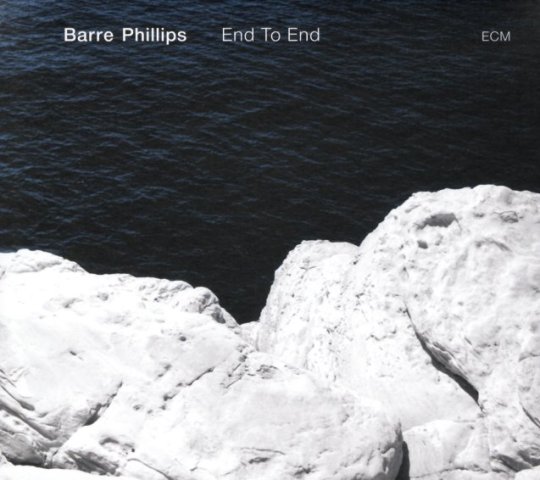
Octogenarian expatriate bassist Barre Phillips has sustained a relatively steady output in the 21st century, but End To End, a solo set (his purported last) for ECM, and a Oh My, Those Boys!, a timely reissue of his extended duets with Japanese confrere Motoharu Yoshizawa on the Lithuanian No Business label are aural confirmation of his consistency across decades. Alone and self-limited to the length of a LP he sculpts a somber soliloquy of intimate communion with his instrument. In the fast company of Yoshizawa, who fields a custom-made electric upright, the mood is much more frenetic in playful. Both settings are aurally transfixing.
Mingus – Jazz in Detroit/Strata Concert Gallery/46 Selden

Weighing in at a mighty five-discs, Jazz in Detroit/Strata Concert Gallery46 Selden dispenses with Christian name specifics and allows surname to suffice in announcing its bigger-than-life subject. Mingus’ instrumental faculties weren’t quite as consistent as the virtuosic powers that propelled him in youth (he had just over six years to live in the winter of 1974 when this material was captured), but any effects of advancing age fall away when he calls a tune, soloing with strength and at length and according his auspicious sidemen including drummer Roy Brooks who is ostensibly responsible for the recording’s survival. Retooled staples like “Pithecanthropus Erectus” and “Peggy’s Blue Skylight” join newer improvisational springboards like “The Man Who Never Sleeps” and “Noddin’ Ya Head Blues” to form a veritable smorgasbord of vibrant small group, stage-born jazz.
Peter Brötzmann

The venerable German road dog always has a place on this list. Now somewhat miraculously pushing eighty he’s still at it, crisscrossing the globe and breaking hearty musical bread with friends old and new. Three releases stood out to these ears: two recent duos and a welcome reissue of Hot Lotta, one of his early free jazz missives recorded almost five decades earlier with faithful countryman Kowald and the Finnish duo of Juhani Aaltonen and Edward Vesala. In the must-hear duo column reside, Ouroboros, a 2011 German club date with Chicago cellist Fred Lonberg-Holm on Astral Spirits, and Sparrow Nights on Trost, a wrenchingly intimate studio encounter with pedal steel phantasmagorist Heather Leigh, who ranks easily among Brötzmann’s most intriguing recent coconspirators.
Corbett vs. Dempsey

Keeping the Corbett vs. Dempsey count to just three for the year is a tough task as their usual prolificacy combined with a commensurate excellence. The reissue of Steve Lacy’s seminal Stamps, originally released in 1979 as his debut for the Swiss Hat Hut imprint narrowly edges out the equally edifying appearance of Milford Graves long-lost Bäbi if only because my spouse allows me to spin the cacophonously calorific latter platter only in her conspicuous absence. A decade was a long time to wait for Joe McPhee and Hamid Drake’s duo follow-up, Keep Going, this time trading stage for studio. But from the music to the mantra-ready title it’s a welcome inoculation against the forces of idiocy and ire globally arrayed against those with humanist allegiances.
Guy Lafitte

Last year it was Lucky Thompson. This year French tenorist Guy Lafitte got the Fresh Sound archival treatment with four full discs of material from his heyday as one of his country’s most popular indigenous purveyors of jazz. Each set delves into a different side of his folio from tight ensembles to modestly-sized orchestras, sometimes in the company of visiting guests, but more often plying his sound amongst a core crew of fellow believers. One of former, Michel de Villers, also earned a survey with The Complete Small Group Sessions 1949-1956 that shows him living up to the sobriquet of “Low Reed” at length on deftly deployed baritone saxophone.
Steeplechase
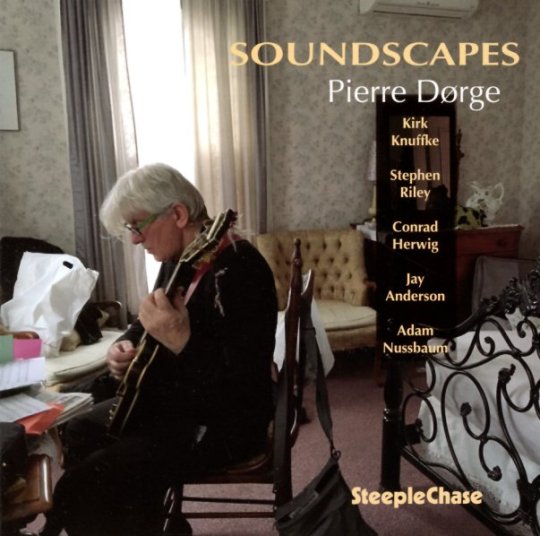
The Danish Steeplechase label always seems to slot in my yearly look back, mainly because of the consistency of both their roster and long-standing aesthetic. Sea changing surprises instigated by their records are exceedingly rare, but the odds of a stimulating listen are conversely high with virtually every release. Guitarist Pierre Dørge’s Soundscapes convenes a quintet with tenorist Stephen Riley and cornetist Kirk Knuffke in the service of the leader’s customarily open-ended compositions. Riley’s Hold ‘Em Joe is at once a canted tribute to Sonny Rollins and a welcome return to the piano-less trio format he first cut his teeth on for the label a decade ago. Baritonist Gary Smulyan’s Alternative Contrafacts yields winsome results with the instrumentation as well in a creative nod to the sort of extrapolations that were the fertile province of the Tristano School in the last century.
No Business/Chap Chap

A partnership between the No Business label and the Korean Chap Chap imprint continues to yield impressive reissues. All in circulation to date are worthy of consideration, but two bent my ears with pleasing consistency. Kang Tae Hwan’s Live at Café Amores offers an extended concert for solo saxophone that is equal measures Zen meditation and extended techniques master-class. Choi Sun Bae Quartet’s Arirang Fantasy teams a trio of Korean improvisers with visiting Japanese bassist Motoharu Yoshizawa for another café set that is ripe with cross-cultural creativity. Lastly, a reissue of sorely unsung vibraphonist Bobby Naughton’s 1976 masterstroke The Haunt with Leo Smith and the recently-deceased Perry Robinson (R.I.P.) in a setting of creative chamber jazz perfection.
Jimi Hendrix – Electric Ladyland 50th Anniversary (Sony)
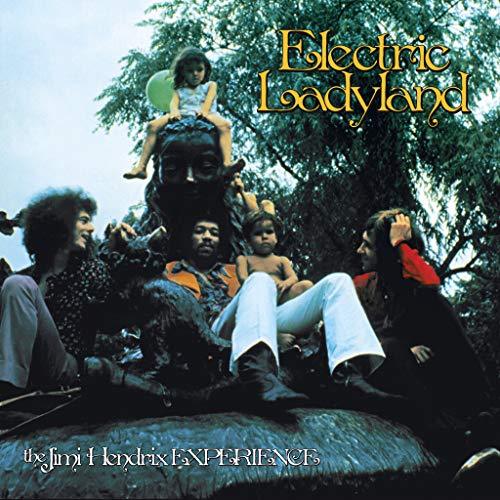
Repackaging of milestone rock albums is still the rage even as the compact disc as a physical musical format continues to wane with advance of other intangible digital formats. Hendrix has had his fair share of legacy parceled and promoted along these lines and it’s hard to fault the family for seeking to both cash-in and do right by his memory. Electric Ladyland 50th Anniversary does better than most past projects in this regard by hewing to a logical presentation and proffering some genuine value across three compact discs, a Blu-ray and a lavish LP-sized container replete hardcover tome covering all the minutiae of the original double-album phenomenon. And let’s face it, Hendrix fooling around with songs in their protean forms is more fun than sitting down with most rock musicians’ finished product.
Jack Sels – Minor Works (SDBAN)
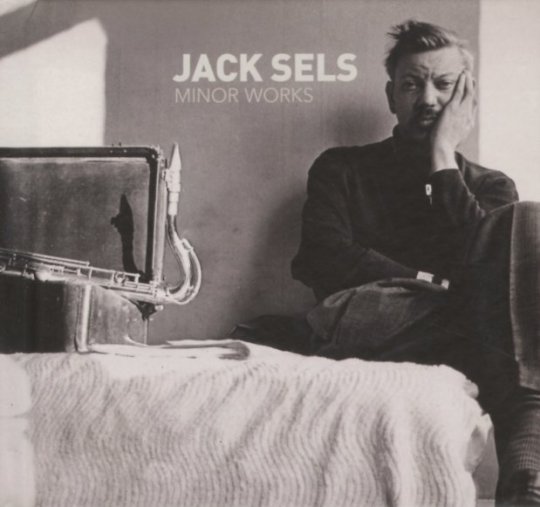
Parts of Belgian Jack Sels biography read like Hollywood-ready bohemian melodrama with riches, rags, tragedy and triumph all sewn into the story of a saxophonist who spent much of his life trying to capture the magic of his American idols while remaining fiercely true to his European roots. That latter decision explains his relative anonymity today, but the expertly-curated if humbly-titled Minor Works is practically bursting with recovered music and anecdotal context that frames a vivid portrait of a player well-deserving of posthumous consideration.
Jon Irabagon
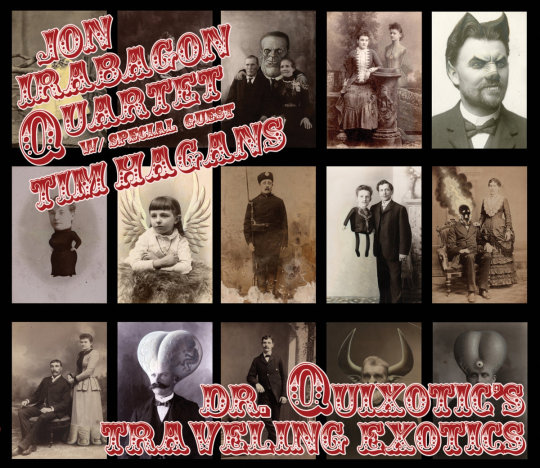
Irabagon’s a dues-payer, tireless and admirably selfless in his dedication to a revolving door of projects and regular gigs. A recent interview with clarinetist & podcaster Jeremiah Cymerman reveals just how cool and unflappable a customer the Filipino-American saxophonist can be as he relates exercising the patience of Job in the face of dunderheaded racism by erstwhile peers. On the aural front two specific contexts stuck with me as evidence of his indefatigability. Dr. Quixotic’s Traveling Exotics on his own Irabbagast imprint teams his quartet with veteran trumpeter Tim Hagans in a program that feels like a natural and more focused extension of earlier work in Mostly Other People Do the Killing. Dave Douglas’ Brazen Heart: Live at the Jazz Standard released on the trumpeter’s Greenleaf label explores one of Irabagon’s recurring sideman posts and at length over eight discs covering a four-night stand at the titular NYC club in 2015.
Roscoe Mitchell

Recent and nascent masterworks with nearly a half-century of revelatory activity between them, Ride the Wind (Nessa) and Sound (Delmark) represent two essential signposts in Roscoe Michell’s reliably iconoclastic career. Both center on the blurring the subjective boundaries between improvisation and composition. Whether adapting improvised solos to orchestral charts or atomizing ensemble interplay into a freeing malleable framework that can take participating musicians in a multiplicity of expressive directions, Mitchell’s courageous adherence to personal designs and investigations has always been the bedrock of his work.
Intakt
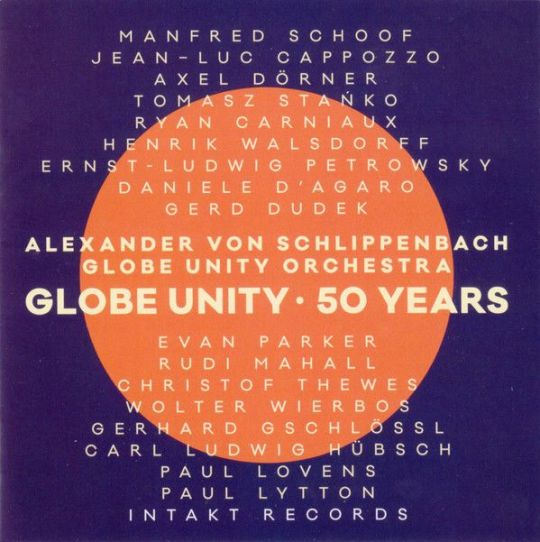
The Swiss Intakt imprint bridges the best aspects of a classic label construct (reliable stable, dependable production values, deep catalog, etc.) with a refreshing willingness to tweak the formula through a voracious ear for new talent. German altoist Angelica Niescer’s triumphant Berlin Concert and a pair of from Cuban pianist Auran Oritz, Live in Zurich with his working trio and Random Dances and (A)tonalities in the unexpected company of clarinetist Don Byron fit that latter bill. Globe Unity 50 Years celebrating the half-century longevity of Europe’s most influential improvising orchestra and Music for David Mossman by the equally indelible trio of Evan Parker, Barry Guy and Paul Lytton argue conclusively that the former end of Intakt’s endeavors is equally secure.
Clean Feed

Staunch loyalists to the tradition of improvisational album in physical form, Lisbon-based Clean Feed doesn’t just soldier on, it leads away with a release docket that reliably weds frequency with dependability. The sixteen discs that hit circulation in the span since January all have elements to recommend them, but two stuck to my ears and cranium more tenaciously than the others for both their audacity and intimacy. Vocalist Serpa’s Close Up is exactly that, a sans-net song forum with the stark support of Ingrid Laubrock’s saxophones and Erik Friedlander’s cello as the sum of sounding board. Similarly, trumpeter Susana Santos Silva’s All the Rivers situates her solitary horn in the unforgiving acoustics of the Panteão Nacional, a vast marble cathedral, for a recital rife with reverberating complexity.
Satoko Fuji – 12 for 60 Project
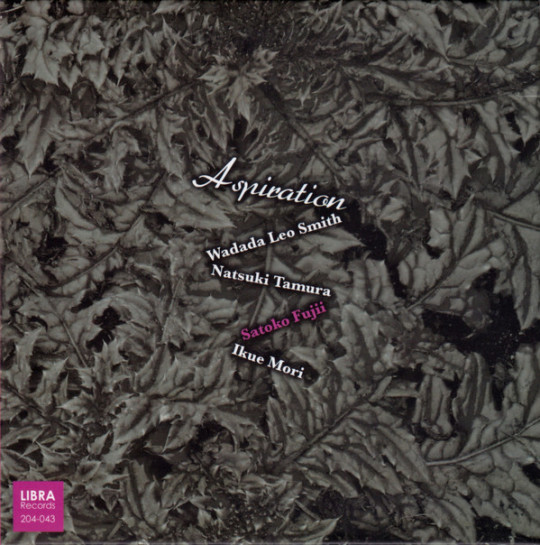
Year-long artist celebrations through output aren’t exactly common, but there’s certainly precedence (bassist Reuben Radding’s 12 in 2007 springs to mind). Already admirably prolific Japanese pianist Satoko Fuji decided to commemorate her 60th birthday on the planet by releasing a dozen albums on the Libra label over the course of the annum. As with her back catalog, many of them featured her kindred spirit Natsuki Tamura on trumpet as well as ensembles both familiar and freshly-minted. I’m still digesting the series in sum, but the standout so far is Aspiration, the core duo’s conclave with Wadada Leo Smith and electronicst Ikue Mori. Fuji has an admitted tendency to crowd the market and numb the senses with her productivity, but the focus and unity guiding these releases sets them apart.
Voices of Mississippi: Artists and Musicians Documented by William Ferris

In common with the intimation of its name, Dust to Digital is a label that takes its time in the laudable work of producing archival music collections that stand instantly apart in terms of quality, scope and expertly-examined context. Voices of Mississippi: Artists and Musicians Documented by William Ferris is a work of art from the packaging to the sounds (and sights) contained within. Incisively indexed into three categories (Blues, Gospel & Folk), the field recordings are immersive and often carry the mesmerizing magic of incantations. A fourth disc containing a DVD collection of Ferris’ hand-shot films evokes time, place and person even more vividly. Temporary antidotes to slowly normalizing nightmare we find ourselves in as a world abound on this list, but this the one I have probably returned to most since my first encounter. It’s that transportive.
V/A – Technicolor Paradise: Rhum Rhapsodies & Other Delights

Exotica was originally indicative a certain slice of commercial music expression, one inextricably entangled in associative issues of appropriation, exploitation and in many cases mollification of indigenous cultural capital. Sometimes it was a complete recontextualization entirely as Numero Group’s Technicolor Paradise explores over three discs and an associative booklet brimming with commentary. This sort of deep crate project is nothing new for the label, but it is gratifying to see them go at it with such gusto after an earlier and unexpected embrace by the label honchos of streaming as a means of revenue. Some selections tip irrevocably into bromidic kitsch, but the first disc especially, which focuses on guitar bands keeps a more even keel of interest.
Charlie McCoy – Real McCoy/Charlie McCoy/Good Time Charlie/Fastest Harp in the South
Jerry Reed – Jerry Reed Explores Guitar Country/Cookin’/Georgia Sunshine/Me & Jerry (w/ Chet Atkins)
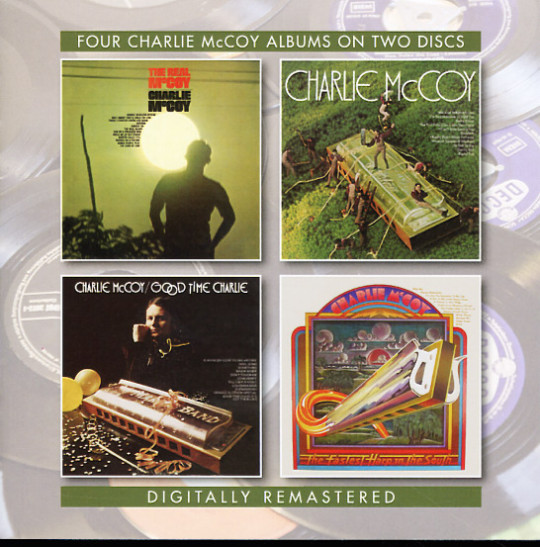
Time was when a two-fer reissue was a common currency in the compact disc market place. BGO’s done that erstwhile staple two better maintaining a fearsome foursome reissue program. Sets by country mouth harp maestro Charlie McCoy and good old boy-turned-ace guitar picker-turned-movie star Jerry Reed. Both are dipped liberally in countrypolitan production values that only occasionally slide over into schmaltz and McCoy wisely avoids vocals in favor of instrumentals that often sound like they could serve as soundtrack snippets to The Rockford Files (not a bad thing). Reed by contrast had a decent set up pipes to complement his strings-slinging skills and the chutzpah to try his hand at dry humor like the hilariously off-the-cuff ode to inconsolable nicotine addiction, “Another Puff.”
V/A – The Beginning of the End: The Existential Psychodrama in Country Music 1956 to 1972 (Omni)
V/A – Hillbillies in Hell: Country Music’s Tormented Testament (1952-1974) – The Resurrection (Omni)
V/A – Hillbillies in Hell: Country Music’s Tormented Testament (1952-1974) – The Rapture (Omni)

After an unexplained although far from unnoticed hiatus several years ago, the Omni Recording Corporation out of Australia roared back to life with renewed reissue campaign. The schedule of new projects eschewed full album(s) + plus bonus tracks for keenly curated collections focusing on the wilder and more tortured sides of the vintage country and country/pop spectrum. The Beginning of the End details descents into madness committed to song while two volumes more of the ongoing Hillbillies in Hell series doubled the entries to date describing that region of idiom(s) devoted to Beelzebub and his myriad earthly incarnations. All three are archly edifying as they are fun.
Sun Ra
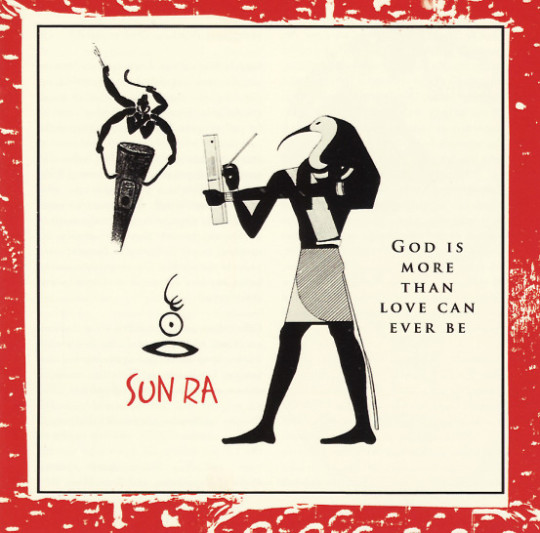
Sun Ra reissues are once again a semi-regularity now thanks to reissue operators like Modern Harmonic and Cosmic Myth, both of which have conscripted longtime Ra repository Michael D. Anderson in their noble endeavors. Cymbals/Symbol Sessions: New York 1973 covers ground previously mapped by an earlier set on the Evidence label pairing worthy material including the (16:33) John Gilmore tenor <I<tour de force “Thoughts Under a Dark Blue Light.” God is More Than Love Can Ever Be has singular status as the solitary piano, bass and drums trio album in the entirely of Ra’s omniversal oeuvre and largely lives up to the stated promise of that proposition.
25 more in no fixed order...
Tyshawn Sorey – Pillars (Pi)
Henry Threadgill – Dirt… And More Dirt (Pi)
Peter Kuhn Trio – Intention (FMR)
Dave Holland – Uncharted Territories (Dare2)
Devin Gray – Dirigo Rataplan II (Rataplan)
John Coltrane - Both Directions at Once: The Lost Album (Impulse!)
JD Allen – Love Stone (Savant)
Fay Victor’s SoundNoiseFunk – Wet Robots (ESP-Disk)
A Pride of Lions – The Bridge Sessions 8
Michael Adkins – Flaneur (hatOLOGY)
Houston Person & Ron Carter – Remember Love (HighNote)
Spontaneous Music Ensemble – Karyobin (Emanem)
Cecil Taylor – Poschiavo (Black Sun)
Paul Rutherford – In Backwards Times (Emanem)
Mike Westbrook Concert Band – The Last Night at the Old Place (Cadillac)
Ustad Zia Mohiuddin Dagar – Raga Yaman & Ragas Abhogi & Vardhani (Ideologic Organ)
Kitsos Harisiadis – Lament in a Deep Style: 1929 to 1931 (Third Man)
Asnakech Worku – Asnakech (Awesome Tapes from Africa)
V/A – African Scream Contest 2 (Analog Africa)
Mulatu – Afro-Latin Soul (Worthy/Strut)
V/A – Listen All Around: The Golden Age of Central & East African Music (Dust to Digital)
V/A – Ocora – Le Monde Des Musiques Traditionelles (Ocora)
V/A – Music City Blues & Rhythm (Ace)
Professor Harold Boggs – Lord Give Me Strength: Early Recordings 1952-1964 (Nashboro/Gospel Friend)
Yuri Morozov – Strange Angels: Experimental & Electronic Music (Buried Treasure)
#dusted magazine#yearend 2018#derek taylor#eric dolphy#barre phillips#charles mingus#peter brotzmann#corbett vs. dempsey#guy lafitte#steeplechase#no business#chap chap#jimi hendrix#jack sels#jon irabagon#roscoe mitchell#intakt#clean feed#Satoko Fuji#voices of mississippi#technicolor paradise#charlie mccoy#jerry reed#the beginning of the end#hillbillies in hell#sun ra
5 notes
·
View notes
Video
Electric Blue Jack Dempsey | Rocio octofasciata
#electric#blue#jack#dempsey#Rocio octofasciata#cichlid#freshwater#underwater#fish tank#fish#tank#fresh#water#cichlidae
18 notes
·
View notes
Text
Coming Soon to MLS: Hoodoo Yaller Dogs, Bizarre Tennis Cults, and a New Portland Stadium with Old Soccer History (A rescue job from 2010)
[On the eve of the 2021 MLS Cup Being hosted in Portland’s Stadium - now known as Providence Park, but having gone by many names over many years - I find myself thinking back to a piece I wrote for the late, great pitchinvasion.net back in 2010 during the last minor league Timber season. Much has happened since, including two remodels and several more name changes. But the fact that the stadium, and Portland soccer, has a fascinating history remains...]
The future home of the Portland Timbers, which opened a final USL season Saturday in the midst of a remodel to ready it for MLS in 2011, has been hosting soccer games with various degrees of success for over 100 years. But while we Portlanders can be proud of our soccer history, we also must be honest: the stadium itself has never really been a good place to watch a game.
Please don’t misunderstand. There have been many glorious crowds, magnificent atmospheres, and bravura games in Portland. On Saturday alone the place was packed with over 15,000 fans to watch a minor league match against the Rochester Rhinos in a stadium configured for baseball—a hearty Portland crowd significantly bigger than those that watched half of the MLS games that same night, and several thousand more than bothered to show up at New York’s sparkling new “soccer palace.”
Yet Portland’s building itself has always been more like Javier Zanetti than Lionel Messi, more Kasey Keller than Clint Dempsey – always there, always valuable, often intriguing, but never likely to steal the show. I’ve heard several local fans of both soccer and baseball describe the stadium as feeling ‘soulless’ – which is reasonable as a description for the feeling of the structure itself. The gently sloping seating areas, currently off-set in a way that makes a soccer crowd disturbingly asymmetrical, are cramped and crumbling. The moldy grey cement walls that border much of the field look melancholy and cheap. The surface has been slippery, ugly versions of artificial turf for over 40 years. But saying that the structure feels ‘soulless’ is very different from saying it has no soul.
In fact, more than any other current MLS stadium (with the possible exception of RFK in Washington DC—which the league is desperate to vacate anyway) Portland’s future home will offer the league true American soccer history. From a ‘Pacific Coast Championship’ contested by teams of immigrants at a 1905 World’s Fair, to the late 1970’s glory days of the NASL, to the rise of American support for US National Teams, to the vanguard of modern supporters’ culture, the Portland stadium has seen it all. And now, if they can get the latest remodel right (a topic I may return to in future weeks), if they can actually make it a good place to watch the game, the Timbers MLS home has a chance to be a truly unique place for American soccer fans: a new stadium with meaningful history.

(Photo of the stadium pre-2011 when it had been configured primarily for minor league baseball. From: wikimedia.org)
The Pre-Timbers Years
The name of the stadium is as good a place to start as any: though currently known as PGE Park, Pacific Gas and Electric only bought ten years worth of naming rights in 2000. Immediately prior to that it was known as “Civic Stadium,” though upon its founding in 1893 place was called “Multnomah Field” after the blue-blood Athletic Club (and, in turn, the county) that still borders the playing surface. It also had a period after its first major upgrade in 1926 as “Multnomah Stadium” until being sold to the city in 1966 by the Multnomah Athletic Club (known colloquially as “The MAC”). And now PGE’s naming rights are set to expire just in time for MLS to arrive—with little word as to what name might come next.

(Set up for American Football in 1959)
So for reasons of both historical flux and personal bitterness (due to having my jacked up PGE rates fund the types of exorbitant CEO buy-outs and Enron business practices that represent all that is wrong with the American economy), I’m going to just call it Portland’s stadium. It has, after all, been the city’s primary site for sport and spectacle of all types for almost 120 years—and its coming incarnation will likely be a prominent face of the city for many years to come.
One of the main explanations for the stadium’s local prominence is its location in an old heart of town: just west of the downtown business district, just east of the moneyed West Hills, just south of a yuppified shopping/dining/drinking district, and just off a mass transit line, the original Multnomah Field was built on a site that the the history of the Multnomah Athletic Club describes as having been a ‘natural amphitheater perfect for athletic use.’ That ‘natural amphitheater’ was created partially by Tanner Creek Gulch, a water source that also made possible an 1840’s tannery central to early Portland’s commerce, along with a series of ‘Chinese vegetable gardens and shanties.’ With the coming of the athletic field, however, Tanner Creek was gradually diverted underground—an old landscape feature that has created some modern challenges to construction work on the current re-model, along with local calls for the new stadium to tribute the ‘historic course of the creek.’ I’ve also heard some vague (and so far unsubstantiated) claims that the gulch is one reason the space would be hard to maintain as a grass playing surface—the natural drainage patterns are apparently more conducive to a bog garden than a football pitch.

(The gulch pre-stadium)
Football was, nevertheless, among the original tenants of the field—though in the 1890’s the specific type of football to be played was still somewhat uncertain. The “intercollegiate” rules for what would become ‘American football’ were still being negotiated on the East Coast, and amateur athletic clubs such as The MAC were prime sites for experimentation. As such, according to The MAC’s history, when the first interested ‘football’ players gathered at Multnomah Field in the 1890’s the specific code they’d use was uncertain: one of their organizers had introduced ‘rugby and association football’ at a local academy, but others “insisted they play the new version.” American football, including many college games played by the various state universities in Oregon, eventually did become a feature of the early decades of the Portland stadium—but is interesting for a soccer fan to note that with a few twists of fate it could have been otherwise.
Soccer did not, however, disappear entirely. In fact, thanks to a tip from eminent soccer historian Colin Jose, I learned that in 1905 Multnomah Field hosted what I’ll claim to be a precursor to the Cascadia Cup—a “Pacific Coast Championship” held in conjunction with the 1905 Lewis and Clark Centennial Exposition (Portland’s version of a World’s Fair). Invitations went out to teams from California, Washington, and British Columbia, and the Portland team prepared by playing teams of sailors from British ships cruising the Pacific coast; one report from the August 27th 1905 Oregonian has the locals “defeating a team of sailors from the British ships Tottenham and Comeric by 6 to1.” If it is true that history repeats itself, I like the sound of Portland defeats Tottenham 6 to 1.
Unfortunately, like too many Cascadia Cups, the actual Exposition tournament didn’t go well for Portland. Only one of the invited teams actually showed up, from Ladysmith BC, and they soundly beat Portland to take the 1905 title. As the September 29th Oregonian reported “The Portlands were outplayed and outweighed, man for man, although they played a plucky game.” The paper went on to describe the great ancestors of the Timbers Army: “The attendance? At the busiest part of the game a careful computation of the occupants of the grandstand revealed 18 young men and one ‘yaller’ dog. Whether this combination formed a hoodoo against the Portlands is not known.” Damn that yaller dog.

(Article from September 29, 1905)
The Portland stadium would host more soccer in coming decades, but prior to the arrival of the NASL Timbers in 1975 it was more known for its eclecticism: it hosted undistinguished US Presidents such as William H. Taft and Warren Harding, an artificial ski jump competition that delighted “40,000 cheering spectators” in 1953, an Elvis Presley concert that prompted a 1957 Oregonian headline of “Stadium Site of Bedlam,” and 22 years of greyhound racing that made for the stadium’s primary income from 1933-1955. Even now, the stadium is a stop on the “Fasten Your Seat Belts—It’s Been a Bumpy Ride” bus tour of “Portland’s discriminatory past:” according to the Willamette Week, “In the 1920s, Oregon had the largest Ku Klux Klan contingent west of the Rocky Mountains, with about 70,000 members and over 50 ‘klaverns’ (KKK chapters) statewide. The KKK held rallies at Civic Stadium, now PGE Park, when voicing its opposition to ‘Koons, Kikes and Katholics.’” (According to some other sources, the focus for the Oregon KKK was mostly on being anti-Catholic—though I’m sure Oregon’s small African-American population wasn’t too popular either).

(A 1926 remodel)
Greyhound racing was displaced as the stadium’s primary tenant in 1956 when Portland’s minor league baseball team moved from a demolished Vaughn Street Park, leading to a decision all soccer fans must rue: in 1969 the stadium achieved the dubious distinction of becoming “the first outdoor baseball facility to install artificial turf.” And because I agree with most American soccer fans that artificial turf is a detriment to the game, I have a sad confession to make: in looking at many pictures of the stadium field through its early history I’ve yet to see one where the grass looked to have been playable. In its grass days Multnomah Field was always a muddy, wood-chipped, patchy mess. It was, and I fear always will be, a pitch conspired against by long rainy days, a busy schedule, a subterranean playing surface, and a previous identity as Tanner Creek Gulch.
The Post-Timbers Years
Despite its bastard turf, however, recent incarnations of Portland’s stadium have hosted some pretty good soccer. In the NASL Timber’s very first year, for example, they beat the Seattle Sounders in front of a 31,000 person home crowd—leading to a good old American style pitch invasion and a run to ‘Soccer Bowl 1975.’ With teams of primarily British imports including Clyde Best and Clive Charles, the first iteration of the Portland Timbers then averaged 20,000 in 1976 (its second year of existence), only falling below 10,000 during their final season in 1982 when the NASL was well into its fatal decline. Their attendance figures were not the best in the league, but considering Portland’s relatively small population they are impressive enough to make a current MLS team like FC Dallas blush.

(Placard from inside Portland’s stadium near the suites)
Portland was also chosen as the host for the 1977 Soccer Bowl – and though the Timbers failed to make the playoffs that season, the stadium turned out over 35,000 fans to watch the New York Cosmos defeat the Seattle Sounders 2-1 in what would be Pele’s last competitive game. As Clive Gammon described it in Sports Illustrated: “It was a huge fiesta in the rain. The lucky ones sat in the stands and the rest on open benches, drying out a little when the sun fitfully appeared, and roaring their hearts out as if this were Munich on World Cup day, not a soaking Sabbath in Portland. All 35,548 of them were crammed into creaky old Civic Stadium that was built in the '20s with greyhound racing in mind but which in the future may be recognized as the place where soccer in North America had its coming-of-age party.”

(Placard from inside Portland’s stadium near the suites)
Sadly, however, claims of a ‘coming-of-age’ party for North American were premature. The NASL Timbers, along with much of the league, were gone by 1982—reincarnated briefly in 1989, and then in its current form in 2001. So the stadium experienced another relative big-event soccer lull, albeit one interspersed with some significant appearances by US National Teams.
Of the US National Team appearances, perhaps the most significant men’s game came in 1997. The US was in the midst of a sloppy qualifying campaign for the 1998 World Cup in France, and needed a pro-American venue for a crucial qualifier against Costa Rica. With the help of Nike (headquartered in nearby Beaverton), the US Federation created an atmosphere that many have cited as an early crest of soccer enthusiasm for our own national team. As Tim Crothers reported “The capacity crowd of 27,396 at Civic Stadium did muster plenty of enthusiasm, albeit somewhat orchestrated by a certain local sneaker company of national repute that, in its role as a sponsor of U.S. Soccer, passed out noisemakers and urged fans to wear white clothing as a sign of unity. This request was largely honored, resulting in a scene that could have passed for a convention of some bizarre tennis cult.”
Yet, however bizarre the scene, when Tab Ramos scored a late goal for a 1-0 victory that “virtually clinched” a World Cup spot Portland felt like the capital of the American game. Even Big Soccer’s Dan Loney, with his entertaining tone of informed mockery, has cited the game in Portland as something close to a genuine highlight of American soccer fandom: “For a long time, Portland in September 1997 held that prize [of greatest moment in US fans’ soccer-watching lives]. There was a fan section! We won! It was a sellout! Soccer was here to stay, and Portland was destined to get an MLS team!”
While the MLS team obviously took a while longer to arrive, within a few years the Portland stadium did earn the inadvertent distinction of being one of the few places in the world to host games for consecutive FIFA World Cups—the 1999 and 2003 Women’s World Cup (with the US serving as an emergency fill-in for China in 2003 after a SARS outbreak). In 1999 Portland only hosted group games, drawing decent crowds including over 20,000 for games such as the decidedly non-glamorous North Korea – Denmark clash (neither team advanced). In 2003, with the stadium having been remodeled two years prior partially in a failed effort to make it more baseball friendly, Portland hosted a semifinal doubleheader with temporary stands and an imported grass surface. In one of those games the US lost to Germany 3-0, a contest that symbolized both the waning on-field dominance of our women’s team and its nascent off-field potential: it drew huge local interest along with a sold out crowd—including a colleague of mine who gladly paid $500 dollars to a scalper for two tickets just to be able to say he was there.

(Photo from September 28, 2003 - with temporary stands and grass for a Women’s World Cup game between Australia and Ghana. From http://www.sportsbusinessdaily.com/article/129425)
The Present and the Future
In more recent years Portland has been enjoying its new version of the Timbers, and wrangling its way through a sometimes contentious debate about what having an MLS team will be worth. Whether or not you like the team, the minor league version of the Timbers has offered an impressive example of how an American city can foster a large and passionate fan base for soccer—despite the team being in a minor league and playing in what is in current form is basically a bad baseball stadium.
And this, ultimately, is the rub. All the meaningful soccer history embodied in the Portland stadium exists at odds with the fact that it has never really been a very good place to watch the game. So yes soccer purists, the MLS version of the Timbers will have to share the stadium with some Portland State University football games, and yes it probably doesn’t make sense right now to put down a real grass playing surface. But for the first time in its 100+ year history Portland is going to have a stadium designed primarily to cater to soccer. And, hopefully, to make more history.
In that vein, it may be appropriate to return one last time to the 1905 Lewis and Clark Exposition, where Portland’s team captain explained his team’s failure to win the championship to an Oregonian journalist by noting: “I wish to say that I am not in the least discouraged at the showing made by our team. On the contrary, I am proud of their work…I am confident that in a year or so, with the support of all admirers in Portland of association football, we shall be able to turn out a team that will be a credit to this city and carry off the laurels in this branch of sport. We can do nothing without enthusiasm….”
And if by including the qualifier ‘a year or so’ the captain was allowing for the possibility it could take 106, then he might be right—with a new stadium and old history Portland may just yet “carry off the laurels in this branch of sport.”
0 notes
